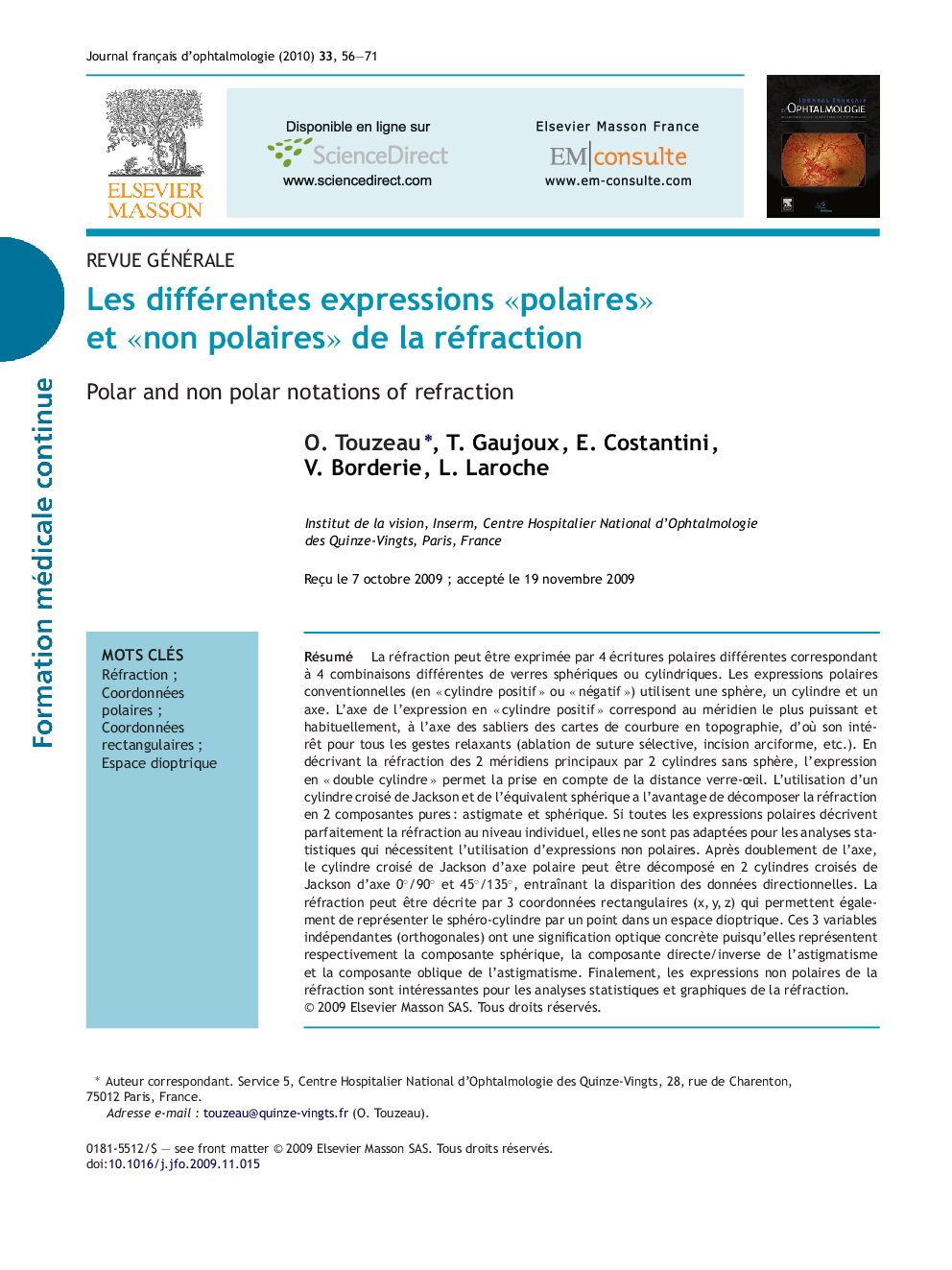| Article ID | Journal | Published Year | Pages | File Type |
|---|---|---|---|---|
| 4024739 | Journal Français d'Ophtalmologie | 2010 | 16 Pages |
Abstract
Refraction can be expressed by four polar notations which correspond to four different combinations of spherical or cylindrical lenses. Conventional expressions of refraction (plus and minus cylinder notation) are described by sphere, cylinder, and axis. In the plus cylinder notation, the axis visualizes the most powerful meridian. The axis usually corresponds to the bow tie axis in curvature maps. Plus cylinder notation is also valuable for all relaxing procedures (i.e., selective suture ablation, arcuate keratotomy, etc.). In the cross-cylinder notation, two orthogonal cylinders can describe (without the sphere component) the actual refraction of both the principal meridians. This notation must be made before performing the vertex calculation. Using an association of a Jackson cross-cylinder and a spherical equivalent, refraction can be broken down into two pure components: astigmatism and sphere. All polar notations of refraction may perfectly characterize a single refraction but are not suitable for statistical analysis, which requires nonpolar expression. After doubling the axis, a rectangular projection breaks down the Jackson cross-cylinder, which has a polar axis, into two Jackson cross-cylinders on the 0°/90° and 45°/135° axis. This procedure results in the loss of the directional nature of the data. Refraction can be written in a nonpolar notation by three rectangular coordinates (x,y,z), which can also represent the spherocylinder by one point in a dioptric space. These three independent (orthogonal) variables have a concrete optical significance: a spherical component, a direct/inverse (WTR/ATR) component, and an oblique component of the astigmatism. Finally, nonpolar notations are useful for statistical analysis and graphical representation of refraction.
Keywords
Related Topics
Health Sciences
Medicine and Dentistry
Ophthalmology
Authors
O. Touzeau, T. Gaujoux, E. Costantini, V. Borderie, L. Laroche,
